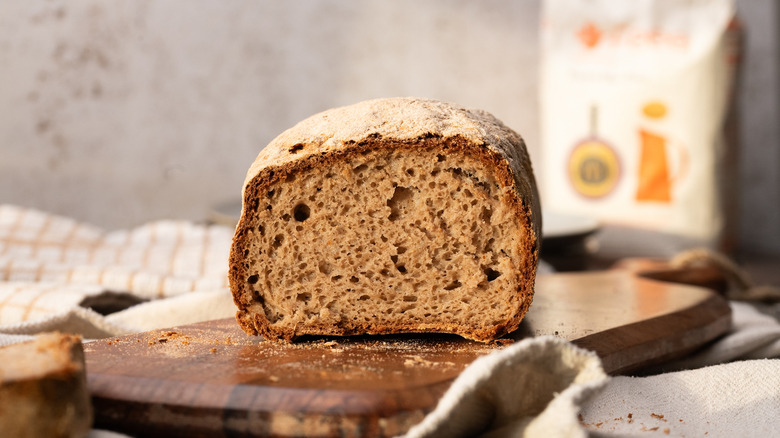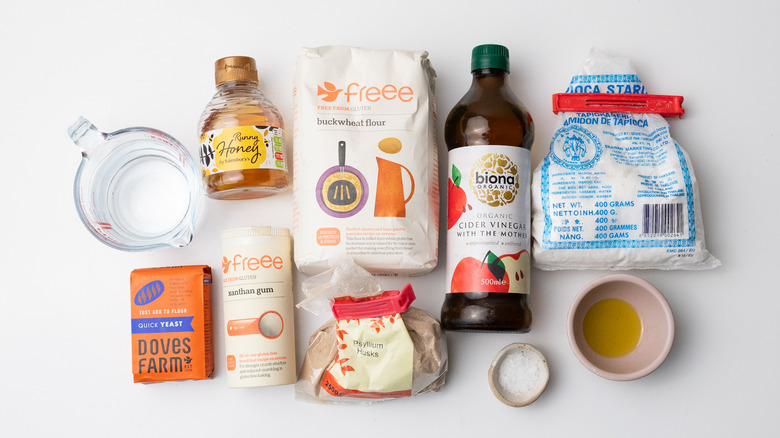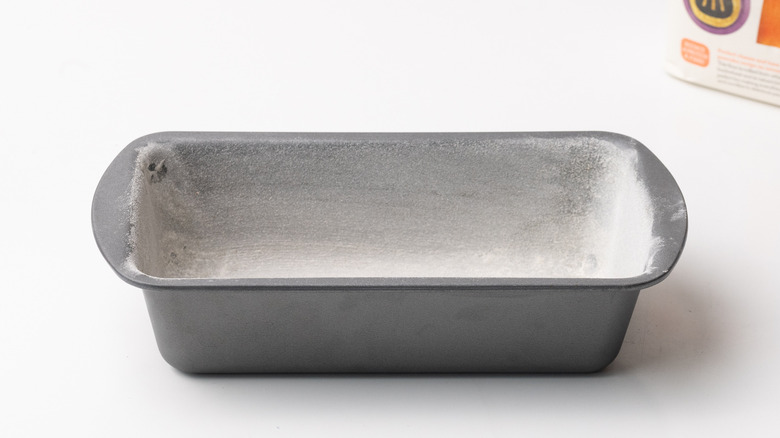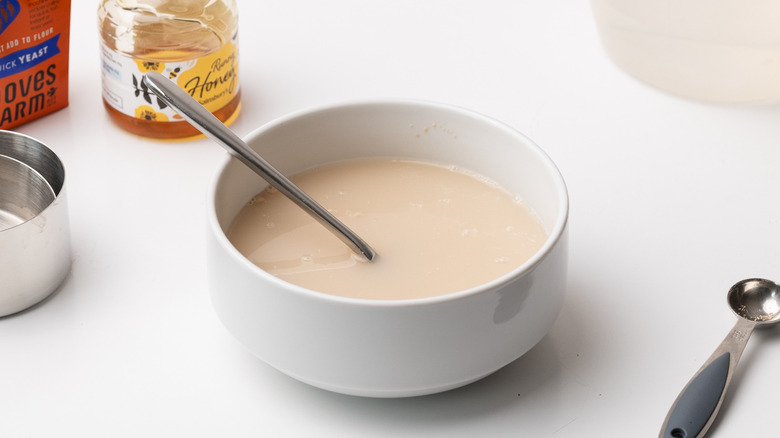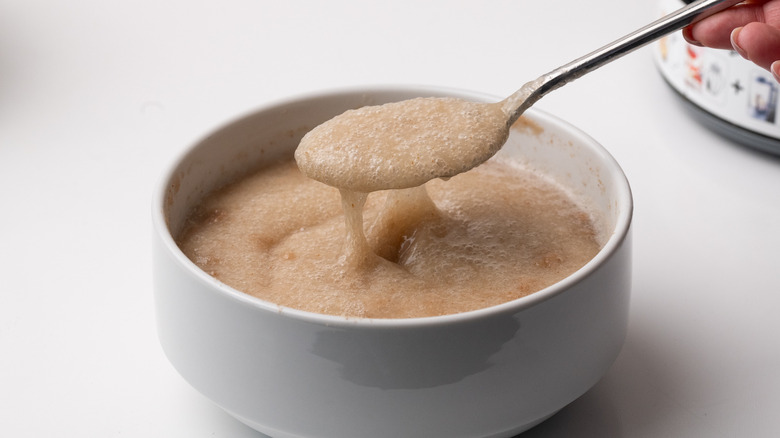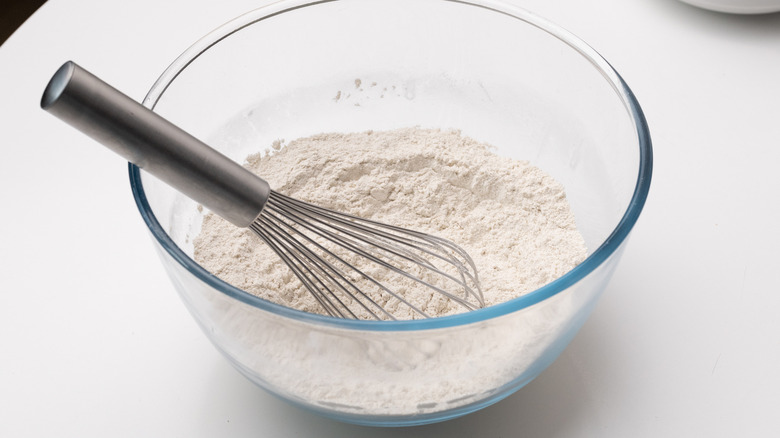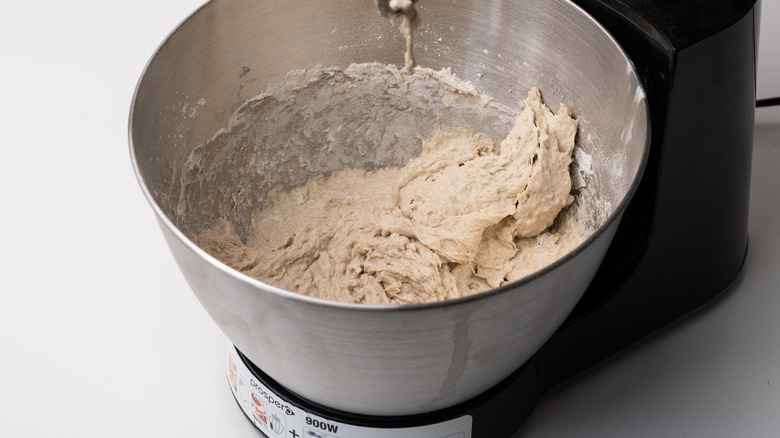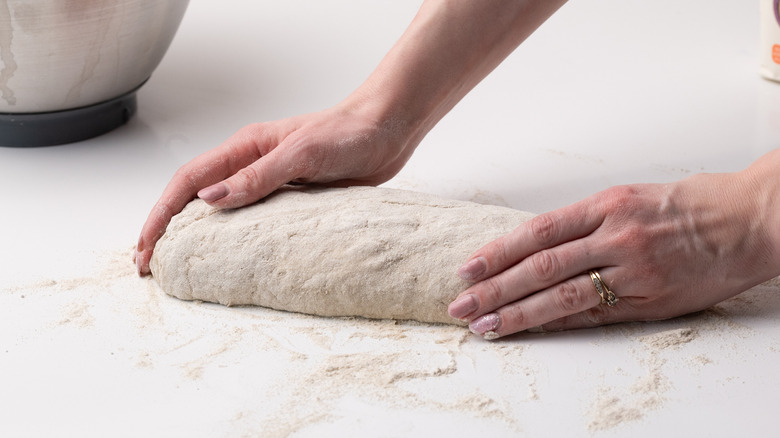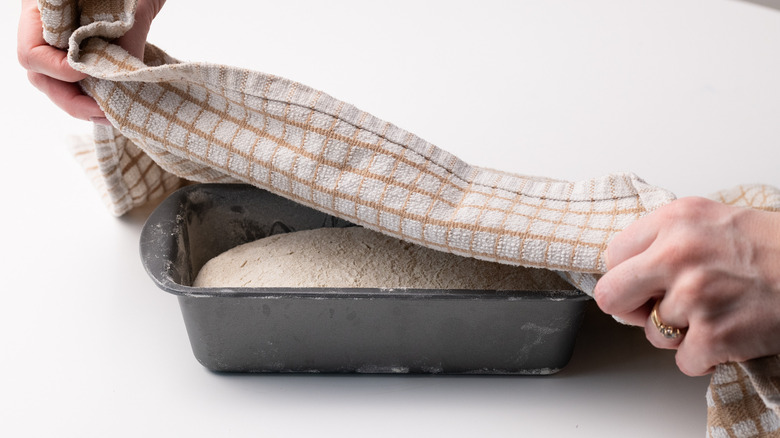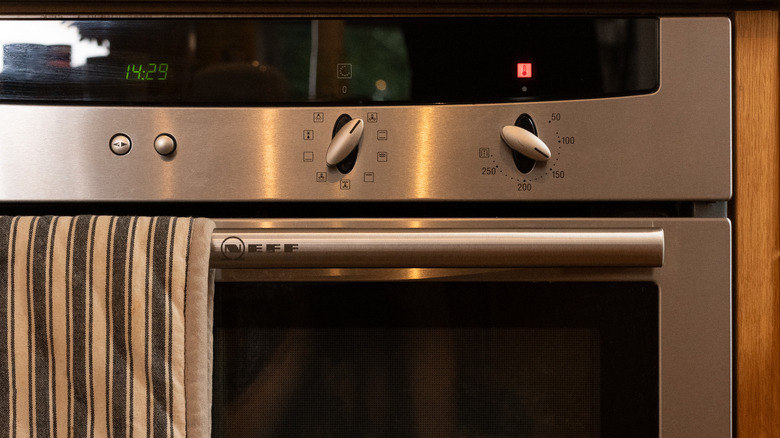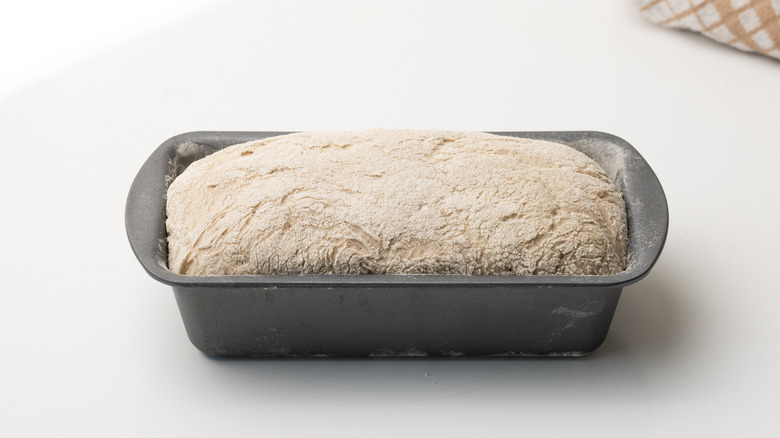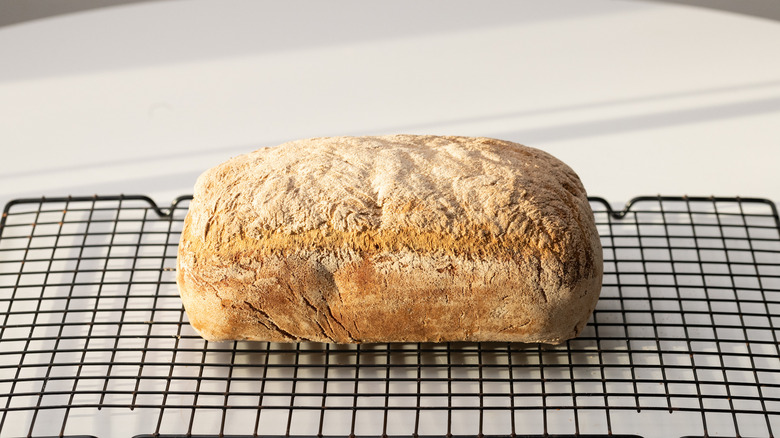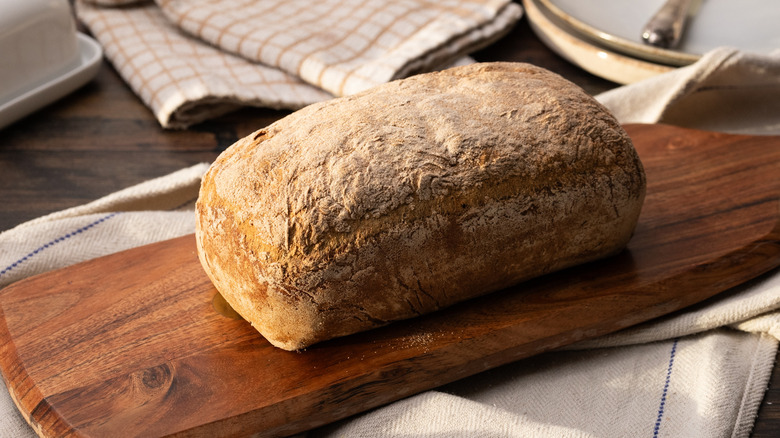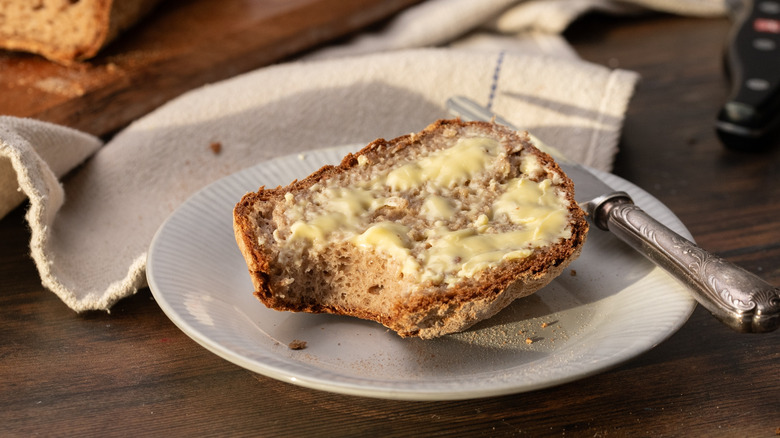Gluten-Free Buckwheat Bread Recipe
Gluten-free bread was once a rare and highly valued item among those who are intolerant or allergic to gluten. What was available on supermarket shelves was often unpleasantly dry and crumbly, lacking all of the wonderful, springy texture and fresh-bread flavor of a gluten-containing loaf. Although the availability of gluten-free bread is much more widespread these days, its reputation hasn't improved that much. Not only that but there is a commonly held belief that gluten-free bread is nearly impossible to make at home. This gluten-free buckwheat bread recipe, created by recipe developer Jennine Rye, is here to prove those notions wrong.
One of the great things about gluten-free bread is that no gluten needs to be activated. The preparation and baking process relies on other ingredients to give the bread its wonderfully springy and light texture. This means that there is no lengthy kneading process required in the making of gluten-free bread. You don't need any particular skills or kneading techniques to make this recipe work, making the whole thing simpler.
Buckwheat is a naturally gluten-free grain with a nutty and slightly bitter flavor. In this recipe, the flour is combined with tapioca starch, xanthan gum, psyllium husk powder, and yeast to make a robust, light, and spongy loaf with a deliciously crusty exterior. If you've put off baking your own gluten-free bread thinking that it is too complicated, try this recipe and reward yourself with your own delicious, home-baked bread.
Gather the ingredients for this gluten-free buckwheat bread recipe
To begin this gluten-free buckwheat bread recipe, first you will need to gather the ingredients. You will want yeast, honey, psyllium husk powder, buckwheat flour, tapioca starch, xanthan gum, sea salt, apple cider vinegar, a dash of oil, and warm water.
Step 1: Prepare the loaf tin
Prepare a loaf tin by greasing it with oil and dusting it with a little buckwheat flour.
Step 2: Mix yeast, honey, and warm water
Mix together the yeast, honey, and warm water in a bowl, then set aside for 15 minutes.
Step 3: Add psyllium husk powder
Add the psyllium husk powder, whisking it in well, then set the mixture aside for another 10 minutes, until the mixture is gelatinous.
Step 4: Combine the flours
In a bowl, whisk together the buckwheat flour, tapioca starch, xanthan gum, and sea salt.
Step 5: Combine the ingredients
In a stand mixer fitted with a dough hook attachment, combine the dry ingredients with the wet ingredients and the apple cider vinegar to form a wet dough.
Step 6: Turn out the dough
Dust a clean surface with a little buckwheat flour, then turn out the dough onto the floured surface.
Step 7: Shape the dough
Shape the dough into a log and carefully transfer to the prepared loaf tin.
Step 8: Let the dough rise
Cover with a towel and set the dough aside somewhere warm to rise for 1 hour.
Step 9: Preheat the oven
While the dough rises, preheat the oven to 425 F.
Step 10: Bake the bread
After rising, remove the towel and bake the bread for 1 hour 45 minutes.
Step 11: Cool, then serve
Turn the baked bread out and let it cool completely before cutting and serving.
How can this gluten-free buckwheat bread be adapted?
Perhaps the most challenging part of baking gluten-free bread is locating the different flours that make it work. While certain ingredients are readily available on the supermarket shelves, some may be harder to come by, but we promise it is well worth the extra effort. While certain parts of this recipe are necessary to make the recipe work, it is possible to play around with different types of gluten-free flour in place of the buckwheat flour, to try out different flavor combinations. Rice flour, sorghum flour, millet flour, and teff flour are all great options, or you can also try out the premixed gluten-free flours that are often available in supermarkets.
To add more flavor to this buckwheat loaf, you can add a wide variety of herbs and spices depending on your taste preferences. Carraway seeds or black nigella seeds add a wonderful depth of flavor, or you could include chopped nuts, seeds, or even dried fruits or olives to your bread before baking it. If you prefer your bread to be less busy, you could also simply roll the top of the dough in some sesame or poppy seeds before placing it into the prepared loaf tin to give the bread a lovely finish and a little extra nutty flavor.
How can this gluten-free buckwheat bread be served?
Although it is very tempting to slice into the loaf as soon as it is cool enough to touch, it is best served when it has properly cooled to allow the loaf time to finish cooking inside. If you cut it while it's still hot, the inside will likely still be a bit sticky; this is simply due to the different ingredients used in gluten-free bread.
Once your bread is cool, this buckwheat bread can be enjoyed in a wide variety of ways. It is delicious when served simply with a generous spread of salted butter or some dipping oils; after all, those who have been eating gluten-free bread for a long time are not often afforded the pleasure of tucking into fresh, home-baked crusty loaves of bread! It is also lovely served with a variety of sandwich fillers or bread toppers, especially those that have more robust flavors, such as cheeses and dried meats, which will pair well with the flavor of the bread. If the bread has been hanging around for a few days and is getting a little stale, it is still lovely when served as toast. The sky is the limit with this bread recipe; whichever bread-based meal you've been missing, this gluten-free buckwheat loaf makes the ideal substitution for gluten-based versions.
Gluten-Free Buckwheat Bread Recipe
This gluten-free buckwheat bread is a boon to your collection of staple recipes, providing perfect texture through a precise combination of ingredients.
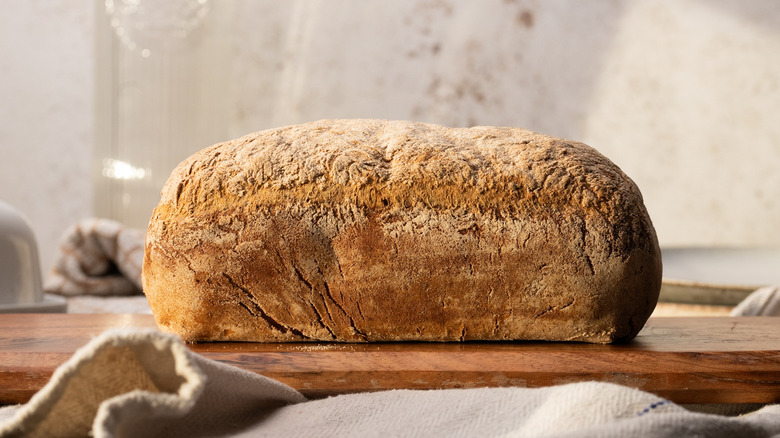
Ingredients
- 1 dash of oil, for greasing
- 2 teaspoons yeast
- 1 tablespoon honey
- 1 ½ cups warm water
- 1 tablespoon + 1 teaspoon psyllium husk powder
- 1 ½ cups buckwheat flour, plus extra for dusting
- ¾ cup tapioca starch
- ½ teaspoon xanthan gum
- 1 teaspoon sea salt
- 1 tablespoon apple cider vinegar
Directions
- Prepare a loaf tin by greasing it with oil and dusting it with a little buckwheat flour.
- Mix together the yeast, honey, and warm water in a bowl, then set aside for 15 minutes.
- Add the psyllium husk powder, whisking it in well, then set the mixture aside for another 10 minutes, until the mixture is gelatinous.
- In a bowl, whisk together the buckwheat flour, tapioca starch, xanthan gum, and sea salt.
- In a stand mixer fitted with a dough hook attachment, combine the dry ingredients with the wet ingredients and the apple cider vinegar to form a wet dough.
- Dust a clean surface with a little buckwheat flour, then turn out the dough onto the floured surface.
- Shape the dough into a log and carefully transfer to the prepared loaf tin.
- Cover with a towel and set the dough aside somewhere warm to rise for 1 hour.
- While the dough rises, preheat the oven to 425 F.
- After rising, remove the towel and bake the bread for 1 hour 45 minutes.
- Turn the baked bread out and let it cool completely before cutting and serving.
Nutrition
| Calories per Serving | 271 |
| Total Fat | 1.7 g |
| Saturated Fat | 0.3 g |
| Trans Fat | 0.0 g |
| Cholesterol | 0.0 mg |
| Total Carbohydrates | 61.9 g |
| Dietary Fiber | 9.8 g |
| Total Sugars | 5.5 g |
| Sodium | 404.0 mg |
| Protein | 6.5 g |
